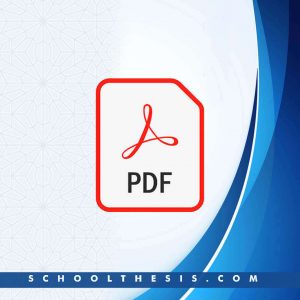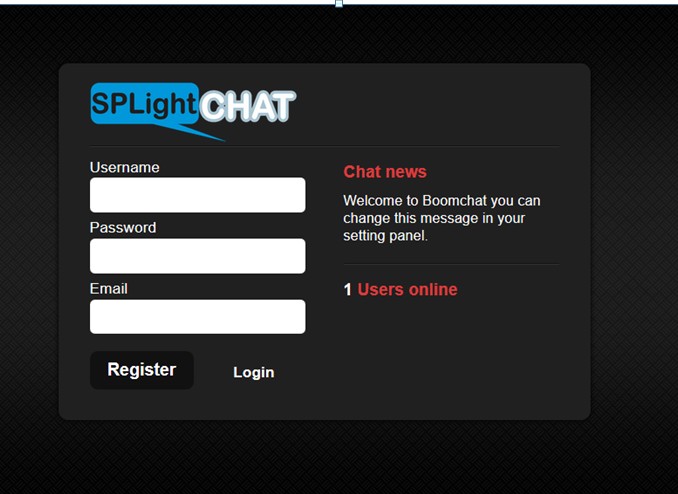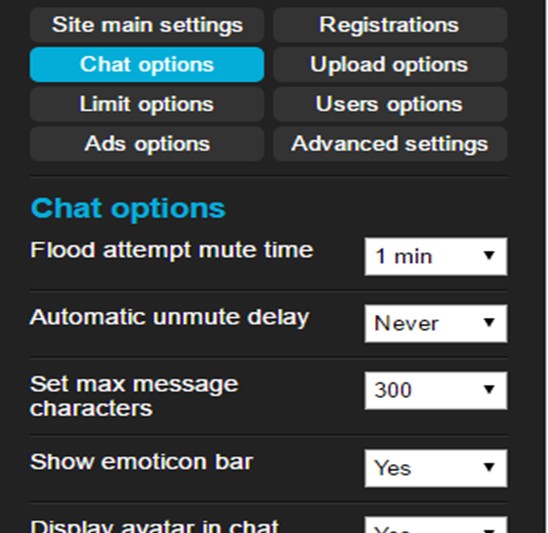Design and Implementation of an Online/intranet Office Chat Application System

Design and Implementation of an Online/ intranet Office Chat Application System
Abstract on Design and Implementation of an Online/intranet Office Chat Application System
In Nigerian Universities a lot of time is spent by faculty staff, and lecturers in various departments moving from one office to another in other to communicate with each other or sending files between each one another.
This project focuses on solving the problem by developing an application for communication services in Nigerian universities using the University of Calabar as a case study. The Chat Application is a web-based application intended to be accessible from the internet or intranet. This allows the application to be available to both mobile phone users and PC users who can access the internet from their devices. The chat applications system was developed using open source web technologies notably HTML, PHP, JSON, JQUERY, AJAX and MySQL.
The chat application system produced in this research work has functions that will enable students, lecturers, and staff or various departments in the institution to communicate using asynchronous string transfer know as chatting between each other.
The developed application was tested using the WAMP application suite and the test results show that the application works as expected.
Chapter One of Design and Implementation of an Online/intranet Office Chat Application System
Introduction
The Internet is the global system of interconnected computers together networks that use the Internet protocol suite (TCP/IP) to link devices worldwide (Wikipedia, 2016). It is a network of networks that consists of private, public, academic, business, and government networks of local to global scope, linked by a broad array of electronic, wireless, and optical networking technologies (Wikipedia, 2016).
An intranet is a network within an organisation that is only accessible to systems in that organisation. A file shared through this network is not available to the public but private to the network domain.
The Chat Application Server functions by establishing a socket connection with the client system, confirming connections, and maintaining the Chat Handler. The Chat Handler is responsible for handling the interactions between the various clients and the server. The handler broadcasts messages to all the clients in a specific room, handles invitations to private rooms, creation of public rooms, and the state of the user list.
Problem Definition
The major problems regarding the delivery of chat application system in Nigerian universities include:
- unable to access colleagues or ask questions freely without moving from ones desk;
- group work cannot be done independently with intermediate synchronous response from all member in the group in one location
- instant message delivery to all client on the system
- File transfer has never been possible using a private and more secure way.
- Message broadcast within split of second has always been a challenge
Objective Of Study
The Objective of this project is to implement a web based chat application that will allow users within an intranet / internet connection to engage in private and public conversations. This will be achieve by following the set standard below:
a. Conceptual design for a secure, accessible and user-friendly web based chat application a university, using the University of Calabar, UNICAL, as case study;
b. Development of such a system to demonstrate its functionality, using the WAMP (cross-browser Apache/MySQL/PHP) web server framework;
c. Perform tests on the said system to assure functionality, accessibility and usability of the system.
SCREEN SHOTS OF THE APPLICATION



Research Justification
Justification for engaging in this study can be drawn from the following reasons:
a. The need to demonstrate the effectiveness of employing mobile driven information systems as a viable complement to systems based on the regular Web, within the university information framework; and
b. The need to achieve a greater degree of responsiveness among stakeholders in the web based chat application system – students, lecturers and system administrators – enabling them collaborate effectively to enhance studies and also result-related complaints.
Research Methodology
In order to realize the objectives of this study, it is pertinent that, as in all matters of substance, strategy be employed in achieving set goals. The methodology employed in the course of this study is outlined thus:
a. Outline a set of requirements to be met by the system proposed;
b. Conceive and implement the design of the said system as a web based application, largely using UML, the Unified Modelling Language, along the lines of an object-oriented approach;
c. Development of the solution system using codeigniter framework in line with the MVC model, CS5, a RAD (Rapid Application Development) IDE for creating Websites and applications.
d. Deployment of the solution system for testing: after the solution is developed, it will be uploaded onto a free web server for the purposes of demonstrating its functionality.
e. Beta testing on the hosted solution to confirm its conformity to the system requirement specifications earlier outlined;
f. Detailed reporting of the findings stated above, with deduced inferences, and noted grounds for future innovation.
Scope And Limitations Of The Study
In the course of realizing this project, I shall take into account the consideration that all development and analysis regarding the project will becentered on intranet / internet standards and technology.
In full, the scope of the work is outlined thus:
a. The solution, as conceived and developed in this study, will focus on web based chat application only;
b. The questions delivered by the solution will be of two formats, viz, instant chat services (asynchronously) and asynchronous transfer of data;
c. As conceived, the solution shall comprise of the following modules:
i. A web-based chat application for lecturers, studentsand other academic staff through which students can chat and interact base on school assignment and share ideas from the comfort on their doom or hostel and can as well interact regarding result-related issues;
ii. A back-end application, to be used by lecturers and administrators, for the management of essential information for the system, such as user violations and complaints’ lay by student,
iii. User authentication modules, which will employ unique modes of authentication to uniquely identify users, and maintain user state within the application.
In addition, a number of limitations exist which must be noted. These include:
a. The proprietary nature of the school portal will make it rather difficult to access the data schema used by it; hence, the data schemas employed by the proposed system will for the most part be theoretical in nature. However, this can be surmounted with adequate cooperation from relevant agencies within the University Management;
b. The time-critical nature of the study informs my use of prototype-based RAD to develop the proposed solution.
Definition Of Terms
a. Beta testing: Testing carried out on software independent of its manufacturer by external users.
b. Internet application: A Web site with dynamic, i.e. data-source oriented user-specific, content, which usually requires some form of user authentication.
c. Mobile device: Any device with the functionality for information management and transfer free from spatial and temporal constraints. Such devices include mobile phones, smart phones, PDAs (personal digital assistants), tablets and readers, among
Others.
d. Mobile Web: The Internet, as accessible to mobile devices and computer system
e. RAD: rapid application development, a style of programming in which emphasis is placed on speed and delivery, usually employing extensive use of IDE (integrated development environment) capability.
f. UML: Unified Modeling Language, the international standard for specifying, visualizing, constructing and documenting the artifacts of software systems.
g. User authentication: the process within the context of an Internet application wherein eligible users are granted clearance to enter – and use – the application;
h. User state: the full set of all user-specific program data within a program or Internet application.
i. online result system:It is web based software, that can process course registration and output results to the user.
j. Web application: see Internet application.
Chapter Layout
The work contains a total of five chapters: the first, titled “General Introduction”, true to form, expatiates on the introductory concepts underpinning this study. Chapter 2, “Literature Review and State of the Art”, offers an exposition into the research which has been carried out prior to the present time. Chapter 3, “System Design Methodology”, deals with the analysis workflow of the solution development process, while Chapter 4, “System Implementation”, focuses on the implementation workflow, discussing details of the implemented system, in relation tothe processes employed in its realization. In conclusion, the final chapter, “Recommendations & Conclusion”, I
